Passenger train services • Main line services / Ticketing • High speed Rail • Germany
➤ See also: High speed train in France – High speed train in Italy – High speed train in Japan – Economics
Note: For educational purpose only. This page is meant purely as a documentation tool and has no legal effect. It is not a substitute for the official page of the operating company, manufacturer or official institutions. It cannot be used for staff training, which is the responsibility of approved institutions and companies.
👉 (Version française disponible)
In brief
The Intercity Express (ICE) is a type of train operated by Deutsche Bahn (DB) in Germany since 1991. Intercity Express trains achieve the shortest journey times in German long-distance passenger rail transport and are therefore the successor to the Intercity network. They run on a regular timetable and serve almost 180 stations in Germany and the five neighbouring countries of Austria, Switzerland, France, Belgium and the Netherlands.
Infrastructure manager: DB-InfraGo
Main HS operators: DB-Fernverkehr, Eurostar, SNCF
First services: June 1991
Lenght of network : 1,396 km
The definition of a high-speed train varies by region, but generally, it refers to trains that operate at speeds of at least 250 km/h (155 mph) on newly built lines and 200 km/h (124 mph) on upgraded lines. In Europe, for example, the UIC (International Union of Railways) considers a commercial speed of 250 km/h as the principal criterion for high-speed rail. In the United States, the definition can include trains operating at speeds ranging from 180 km/h (110 mph) to 240 km/h (150 mph).
➤ See the UIC definition
The 403 high-speed multiple units produced between 1990 and 2023 by various manufacturers are also referred to as ‘ICE’. The multiple units are divided into six main variants. The fleet is set to grow to 484 multiple units by 2029. SNCF is the only operator to run French trains on the German network, along with TGV-POS and Eurostar (formerly Thalys). In reality, French TGVs make very little use of the 250km/h network.
They reach top speeds of between 200 and 300 km/h in passenger service, 320 km/h in France, and the average distance travelled by ICE trains in 2019 was 335 kilometres. In 2019, the trains carried around 99 million passengers, which corresponds to a daily average of around 270,000 travellers. This corresponds to around 66 per cent of passengers on Deutsche Bahn’s long-distance services.
Routes
The high-speed train network in Germany, known as the Intercity-Express (ICE), began operations on June 2, 1991. The first line connected Hamburg, Hanover, Frankfurt, Stuttgart, and Munich. This marked the start of high-speed rail travel in Germany, aimed at providing faster and more efficient connections between major cities.
The ICE network has expanded significantly since its inception and now connects most major cities in Germany, as well as some destinations in neighboring countries, providing a fast and comfortable alternative to air travel for domestic and international routes within Europe.
Network expansion
1991: Hanover–Würzburg 250km/h1991: Mannheim-Stuttgart 280km/h
1998: Wolfsburg-Berlin 250km/h
2002: Bonn-Flugh-Francfort 300km/h
2003: Cologne-Düren 250km/h
2004: Karlsruhe-Rastatt 250km/h
2006: Nuremberg-Ingolstadt 300km/h
2015: Erfurt-Halle/Leipzig 300km/h
2017: Nuremberg-Erfurt 300km/h
2022: Wendlingen – Ulm 250km/h
The current total of new (NBS) or rebuilt (ABS) lines for 250km/h is 1,396 km.
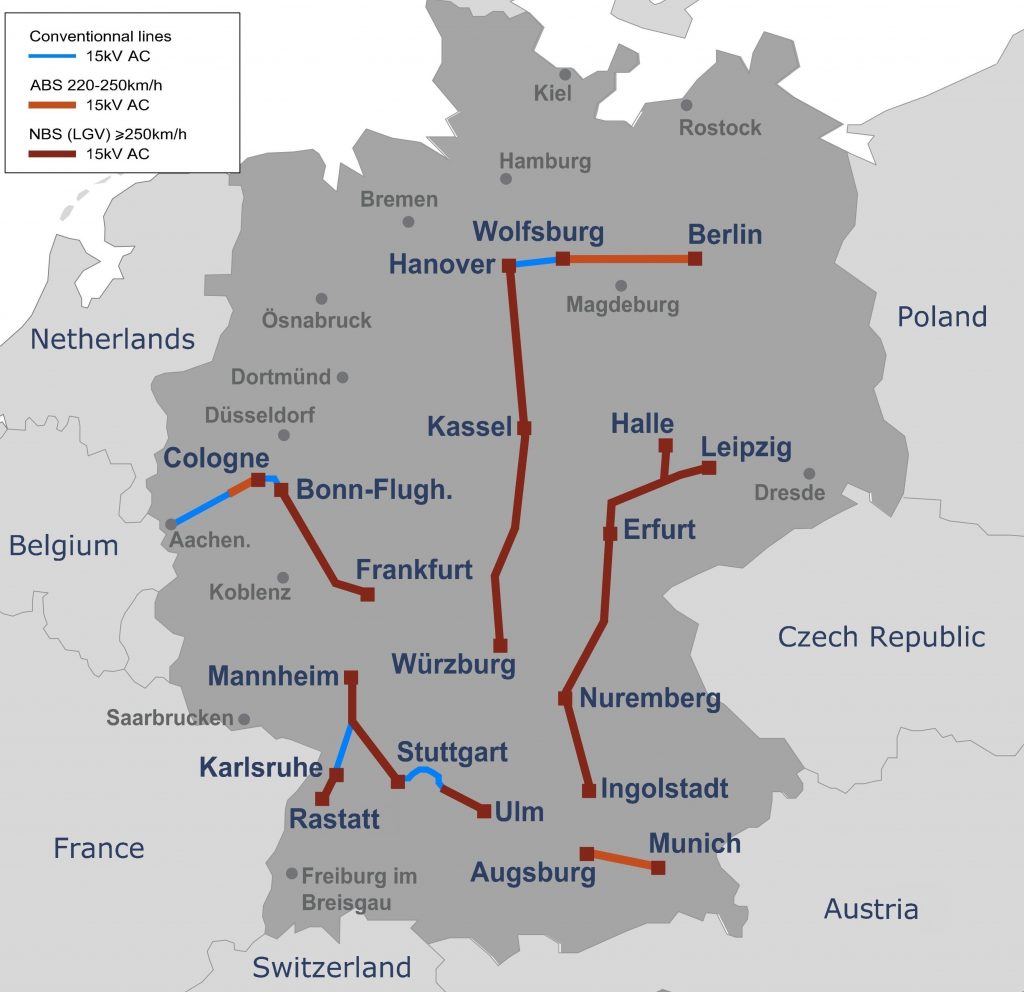
National rolling stock (past and present)
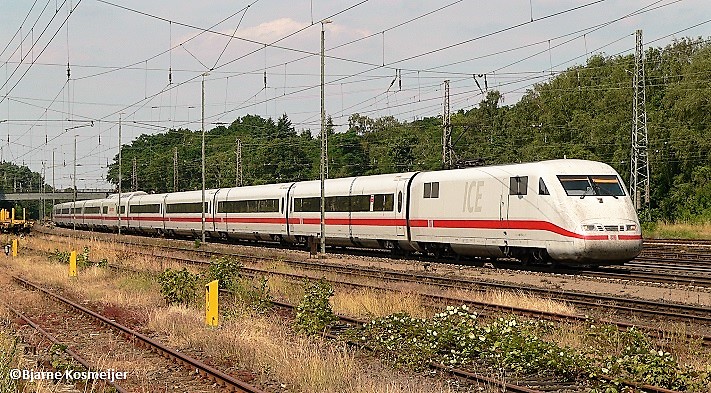
Siemens/AEG/Krupp
1991 – …
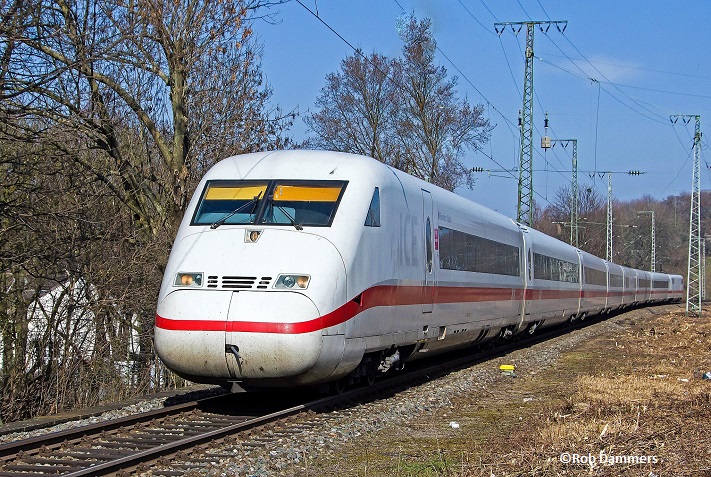
Siemens/ABB/AEG
1995 – …
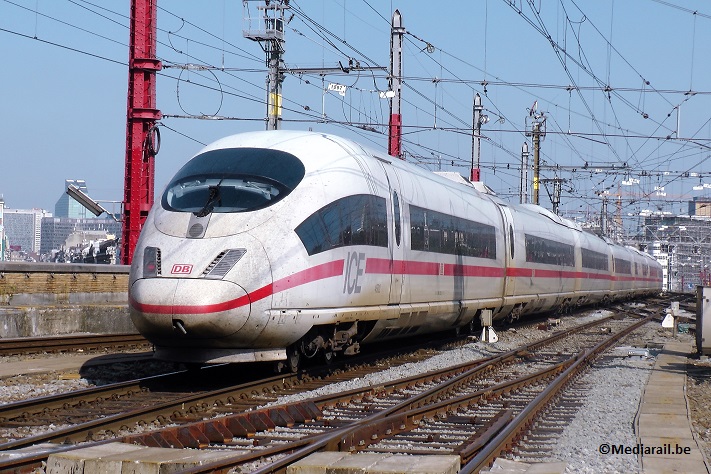
ICE 3M BR406 (†)
Siemens/Bombardier
2000 – 2025
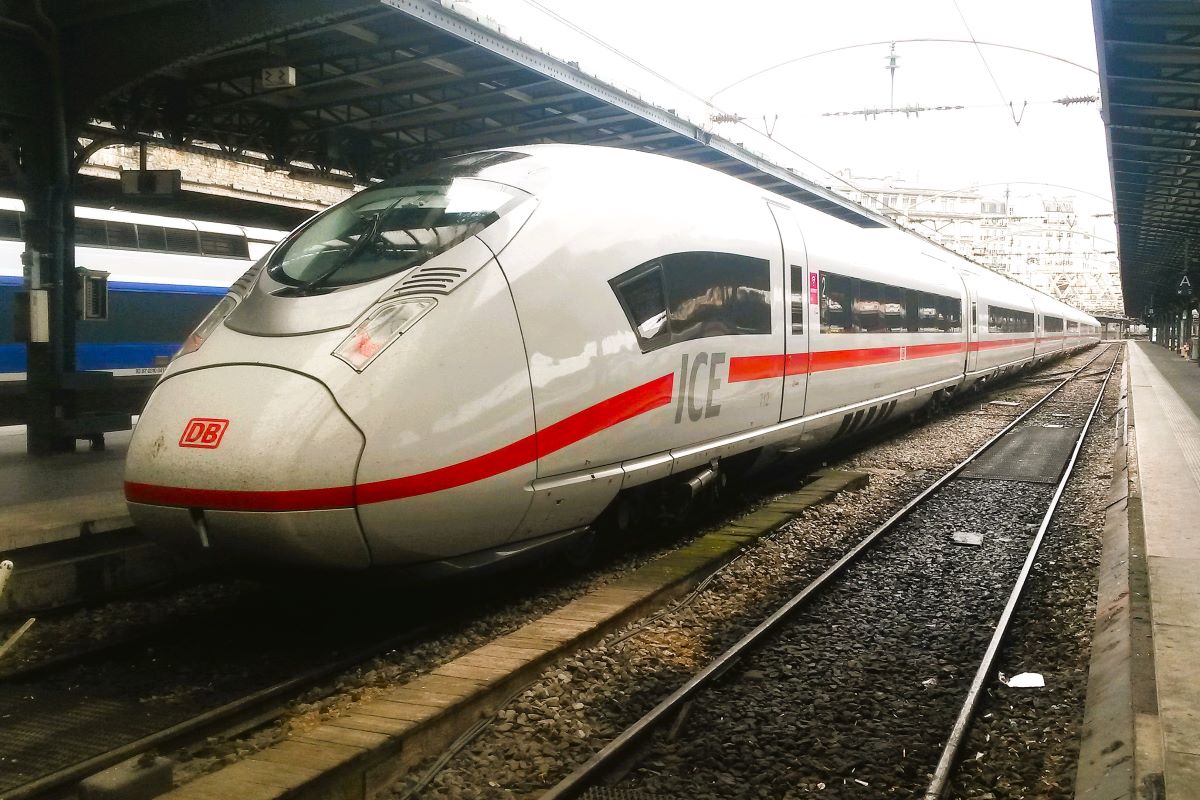
Siemens
2013 – …
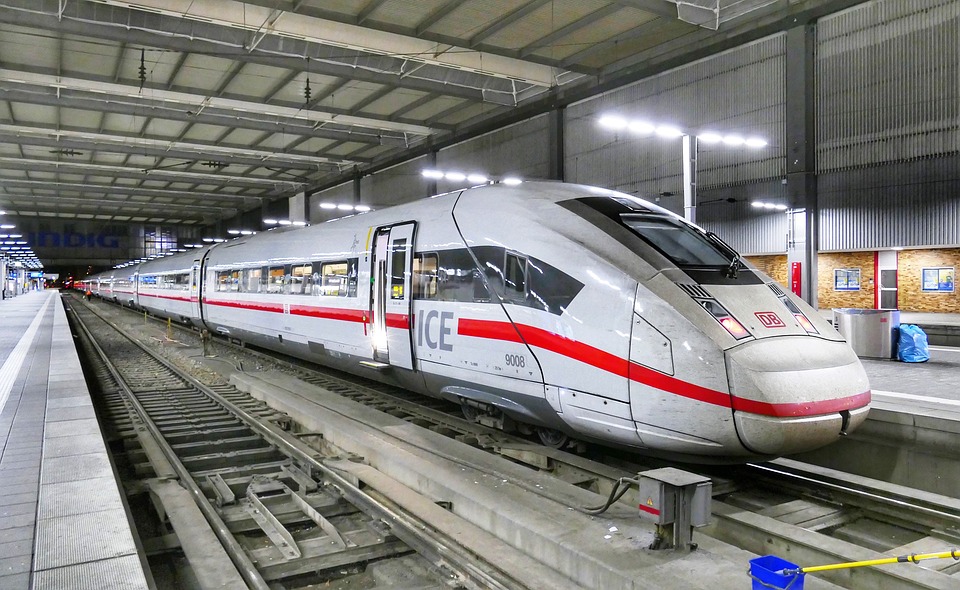
9201 – 9237
9001 – ….
9451 – 9500
Siemens/Bombardier
2016 – …
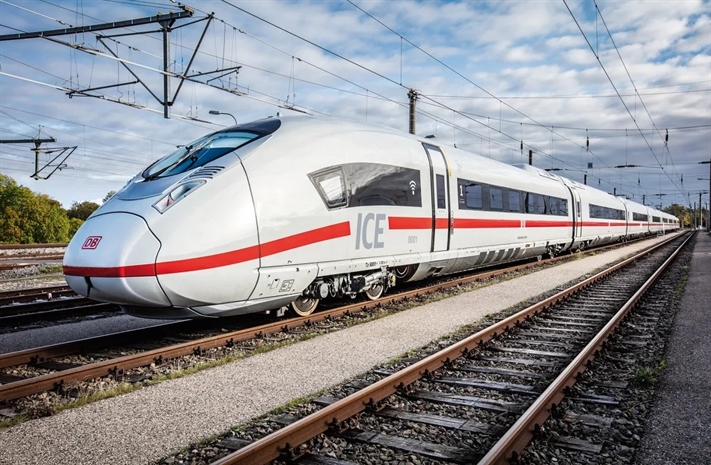
Siemens
2022 – …
Other rolling stock from foreign operators that runs in Germany (past and present)
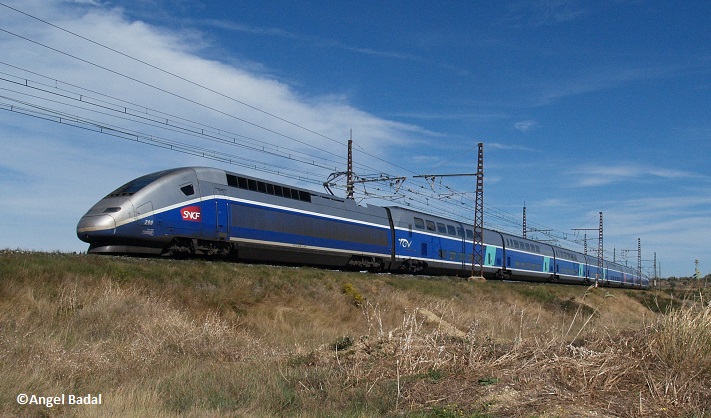
201 – 294 2-current
Alstom
1995 – …
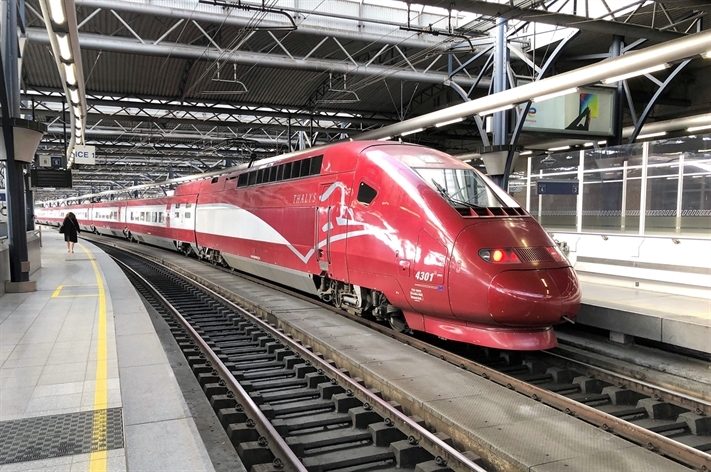
SNCB 4301 – 4307
DB 4321 – 4322
NS 4331 – 4332
SNCF 4341 – 4346
Alstom
1996 – …
👉 (Version française disponible)
🟧
[TOP]
Main line • High speed Rail • Germany • Lexical
